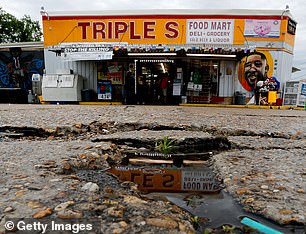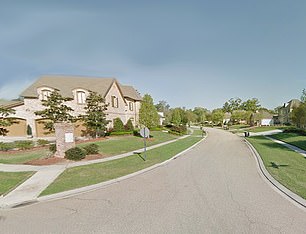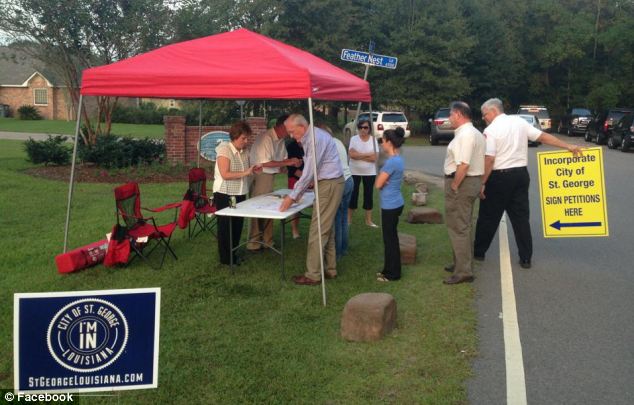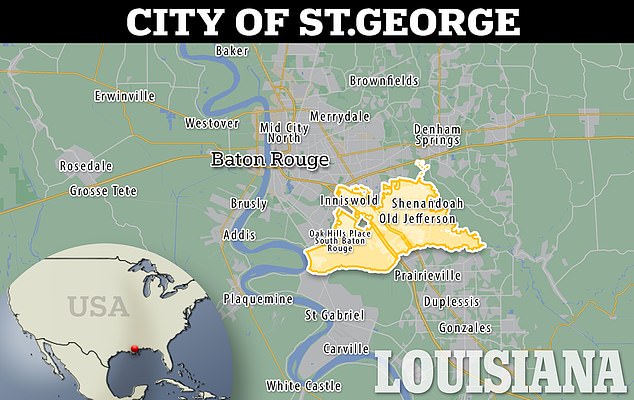Baton Rouge’s wealthy white residents have won a decade-long court battle to break away from poorer neighborhoods and form their own city with plans for better schools and less crime.
The Louisiana Supreme Court ruled Friday that the new city of St George could move forward with its incorporation, separating itself from the rest of Baton Rouge.
St George will have 86,000 residents in a 60-square-mile area in southeastern East Baton Rouge Parish and will have its own mayor and city council.
Supporters of the new city say the existing municipal-parish government is poorly managed, with high crime rates and poor schools.
Opponents say the move is “racist” and will create a “white enclave” as it separates a wealthy area of the city from the majority-black city and school district.
St George will have 86,000 residents in a 60-square-mile area in southeastern East Baton Rouge Parish.


St George (right) will become a separate city from Baton Rouge

Campaign leader Norman Browning (pictured with his family) told the New York Times: “I look forward to our ability to build an efficient, productive and vibrant city.”

The leader of an anti-St. George, ME Cormier, told the New York Times: “In fact, there is no basis to claim that the existence of St. George is positive or that it will bring positivity or have a positive impact on any area of the cities.” or the parish.’
Plans for St George began almost 15 years ago when residents decided they would like to start their own school district.
Their plans then became more ambitious and in 2015 they made a proposal to create their own city.
The proposal did not get enough votes and the movement was paused until 2019, when a second vote to incorporate St George was passed, with 54 per cent of residents voting in favor of separation.
A lengthy court battle followed, with Mayor-President Sharon Weston Broome and Mayor Pro Tem Lamont Cole suing St. George organizers shortly after the election.
They argued that St George’s would divert more than $48 million in annual tax revenue from the city-parish government, with serious knock-on effects for local services and staff.
They claimed that loss of income would mean services would have to be cut and employees made redundant and that St George’s proposed internal budget was inaccurate and they would not be able to be self-sufficient.
Louisiana’s lower courts supported Baton Rouge’s arguments and rejected the proposed new city.
But now the state Supreme Court has overturned their decisions, saying the internal budget is balanced and will be able to provide public services, meaning St George can incorporate.
Critics of the St. George proposal argue that it would create a poor, black, urban Baton Rouge and a rich, white, suburban St. George.
Resident Sarah Stelly wrote on Facebook: “St George reeks of class division, it is fast becoming the new worst kind of bigotry.”
Another resident, Paul Brady, wrote: ‘The segregationist won. I am no longer a citizen of Baton Rouge. I now live in the white enclave of St George.
The leader of an anti-St. George, ME Cormier, told the New York Times: “In fact, there is no basis to claim that the existence of St. George is positive or that it will bring positivity or have a positive impact on any area of the cities.” or the parish.
“The unraveling, from a logistical point of view, is going to be a real nightmare.”
But Andrew Murrell, leader of the St George project, told the newspaper: “This is the culmination of citizens’ exercise of constitutional rights.”
“We now begin the process of delivering on our promises for a better city.”
Fellow campaign leader Norman Browning told The Times: “I look forward to our ability to build an efficient, productive and vibrant city while contributing to a thriving East Baton Rouge Parish.”

After Hurricane Katrina, the city of Baton Rouge accepted more than 200,000 displaced New Orleans residents, most of whom were black and settled in the city’s northern urban areas.

The divided campaign arose from the ashes of a failed campaign to create a new school district by wealthy, predominantly white residents of south Baton Rouge.
A 2014 study by the Baton Rouge Area Chamber found that the effects of partition would be economically devastating for the rest of Baton Rouge, immediately creating a $53 million budget deficit.
The study also raised concerns about whether the remaining parts of Baton Rouge, Louisiana’s state capital, could sustain public services despite the loss of tax revenue.
As the tables below show, the projected numbers for St. George would create a city with a median income $30,000 more than current Baton Rouge, while the unemployment rate would be cut in half.
According to figures compiled by the Baton Rouge Area Chamber, the new city would have a majority white population, unlike Baton Rouge, which has a black majority, and the number of people receiving food stamps would also be cut by more than half. .

